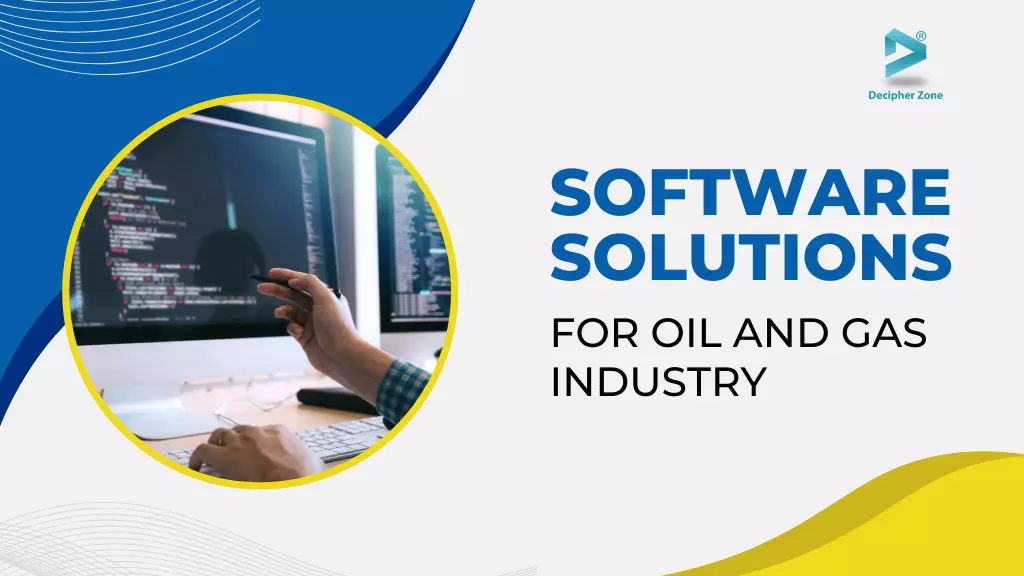In today’s fast-paced energy industry, efficiency and accuracy are more important than ever. As companies face increasing pressure to maximize production while minimizing costs and environmental impact, digital solutions have become a critical component of operations, oil and gas production software is one such tool that is revolutionizing how upstream and midstream companies manage their workflows, data, and resources.

The complexity of oilfield operations demands a high level of coordination across multiple teams and systems. From drilling and well completion to production and transport, the entire lifecycle must be monitored and optimized. Oil and gas production software plays a vital role by providing real-time visibility, automation, and analytics that enable better decision-making at every stage of production.
One of the most significant advantages of oil and gas production software is its ability to centralize data. Traditionally, production data was collected manually and stored in disparate systems, which made it difficult to access timely insights. With modern software, production data from sensors, SCADA systems, and field reports can be integrated into a single platform. This consolidation enhances collaboration and helps teams respond quickly to operational issues.
Another critical feature of oil and gas production software is automation. Tasks that were once manual, such as data entry, equipment monitoring, and performance tracking, can now be automated to save time and reduce human error. Automation also extends to predictive maintenance, where the software can analyze historical data to anticipate equipment failures before they occur, reducing downtime and maintenance costs.
Analytics capabilities are at the heart of oil and gas production software. The ability to analyze vast amounts of operational data allows companies to identify trends, optimize production rates, and forecast future output. By using advanced algorithms and machine learning, this software enables operators to make data-driven decisions that improve both short-term efficiency and long-term planning.
Regulatory compliance is another area where oil and gas production software proves its value. The energy industry is subject to strict environmental and safety regulations that require detailed reporting and monitoring. Software solutions can automatically generate compliance reports, track emissions, and ensure that all operational activities meet regulatory standards. This not only reduces legal risk but also enhances a company’s reputation with stakeholders.
Oil and gas production software also improves asset management by tracking equipment performance, maintenance history, and inventory levels. With a clear picture of asset conditions, operators can schedule preventive maintenance and make informed decisions about equipment upgrades or replacements. This proactive approach increases asset lifespan and ensures uninterrupted production.
Field operations are greatly enhanced through the mobile capabilities of oil and gas production software. Field technicians can input data, receive alerts, and access operational dashboards directly from their mobile devices. This mobility ensures that field personnel stay connected with the central office and can respond to issues in real time, leading to faster resolutions and improved safety.
The integration of cloud technology has further expanded the capabilities of oil and gas production software. Cloud-based platforms offer scalability, remote access, and enhanced security, making it easier for companies to manage operations across geographically dispersed assets. Moreover, the cloud enables real-time collaboration among teams regardless of their physical location, supporting a more agile and responsive business model.
Another benefit of oil and gas production software is the ability to support sustainability initiatives. With increasing focus on reducing carbon emissions and energy consumption, companies are turning to software tools to monitor environmental impact and optimize energy use. These solutions help identify inefficiencies and suggest ways to reduce flaring, water usage, and other environmental hazards.
Implementing oil and gas production software does require an initial investment in technology and training. However, the return on investment is often realized quickly through cost savings, increased productivity, and improved operational control. As the software becomes more user-friendly and customizable, even smaller operators are finding it accessible and valuable.
Looking ahead, the future of oil and gas production software will likely include greater use of artificial intelligence, digital twins, and IoT integration. These technologies will further enhance the ability to simulate production scenarios, monitor assets remotely, and automate decision-making processes. As the industry continues to embrace digital transformation, software solutions will remain at the core of innovation.
In conclusion, oil and gas production software is no longer a luxury—it’s a necessity for companies aiming to stay competitive in a dynamic and demanding industry. By enhancing efficiency, improving safety, and enabling smarter decisions, these tools are helping reshape the energy landscape for the better. As technological advancements continue, the impact of oil and gas production software will only grow, making it an essential part of the modern energy enterprise.

